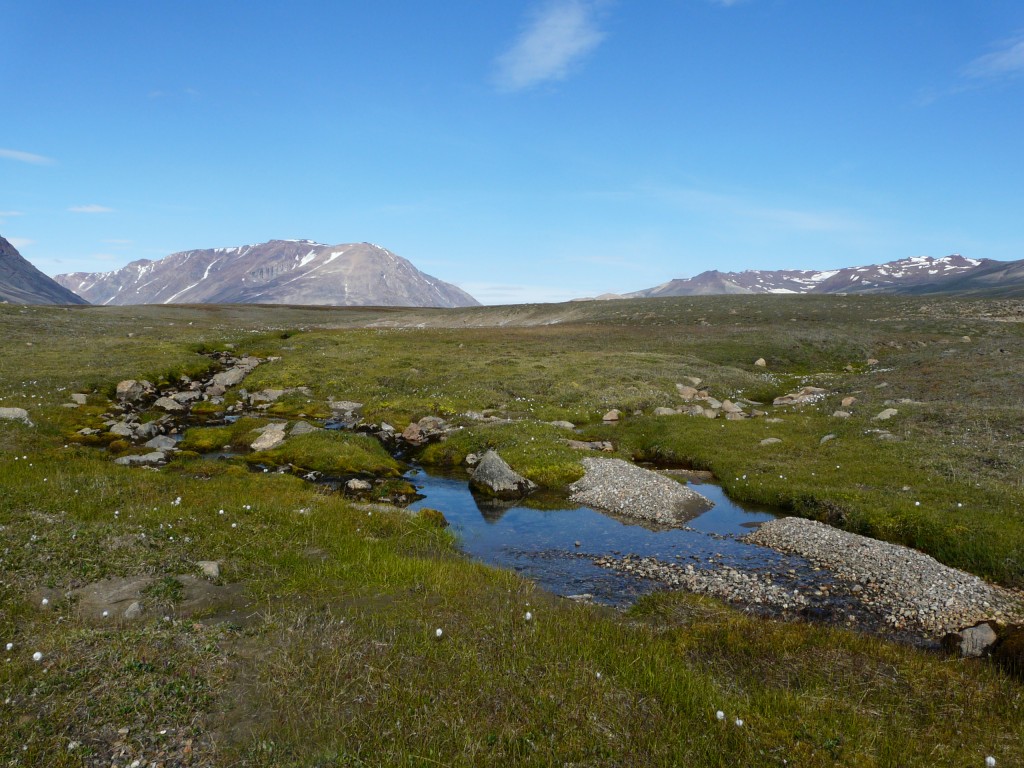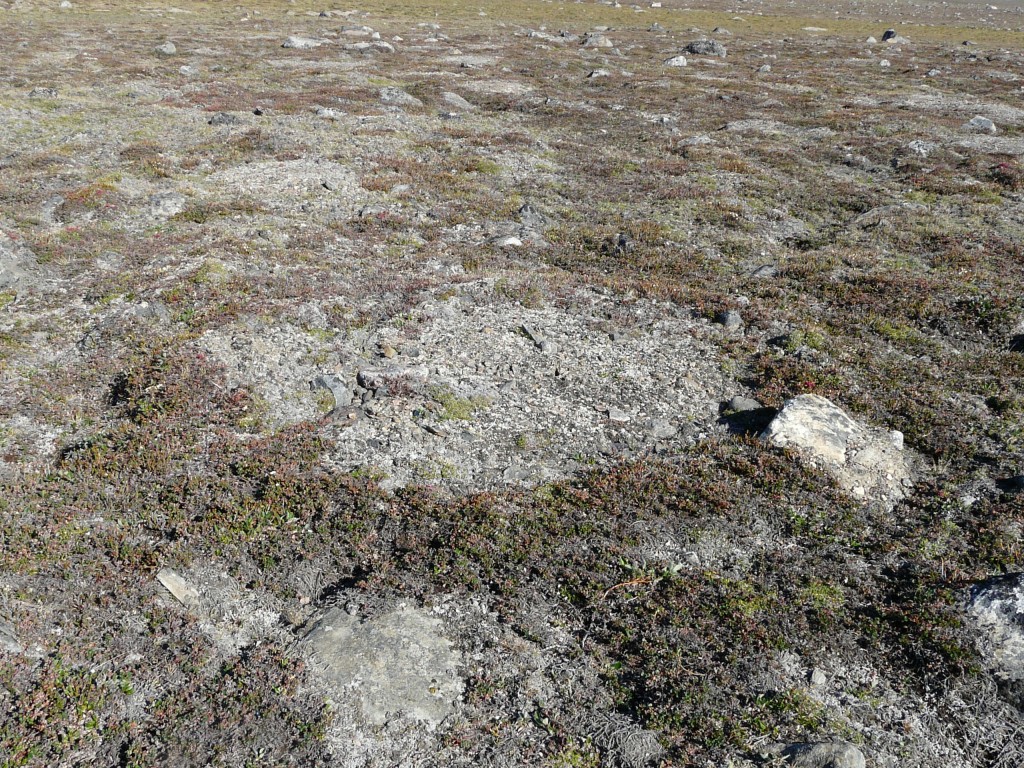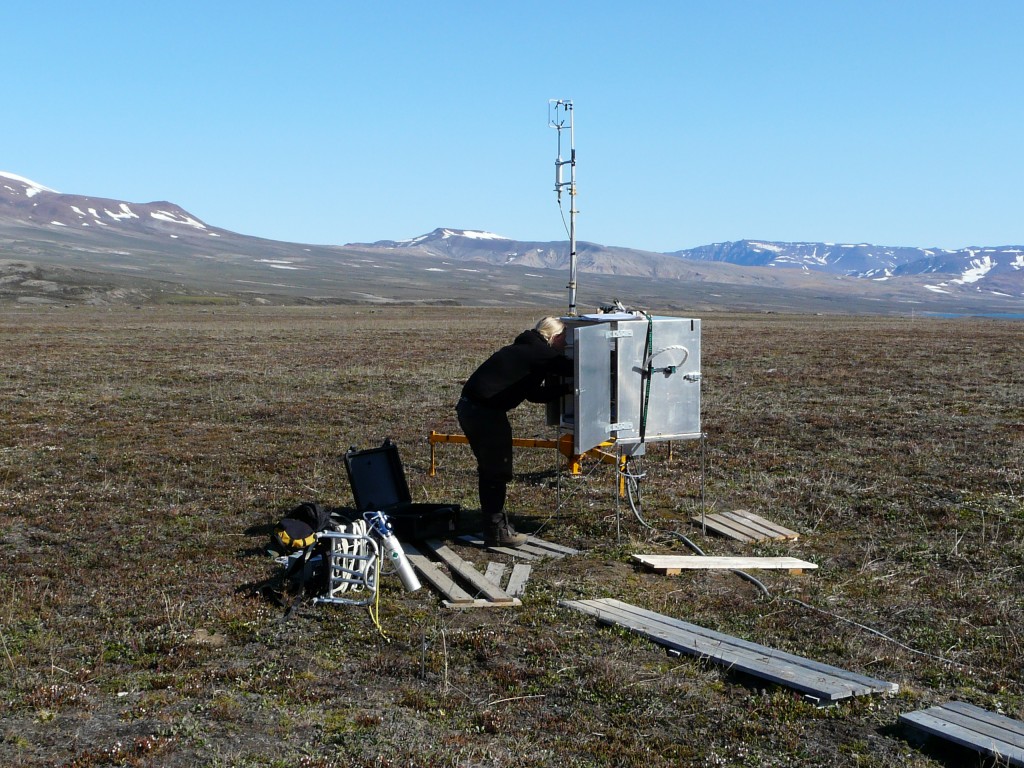Arctic future: not so permafrost
“A glance into the future of the Arctic” was the title of a press release I received from the Alfred Wegener Institute this week, relating to the permafrost landscape.
“Thawing ice wedges substantially change the permafrost landscape” was the sub-title.
“I felt the earth move under my feet…” was the song line that came to my mind.
The study was led by Anna Liljedahl of the University of Alaska in Fairbanks. And Fairbanks is, indeed, where I would like to have been this past week, with Arctic Science Summit Week taking place.
Arctic Council in Fairbanks
Clearly the Arctic Council thought the same and actually managed to put their wish into practice by holding a meeting of the Senior Arctic Officials (SAOs) there from March 15th to 17th. The agenda focused to a large extent, it seems, on climate change, and “placing the Council’s overall work on climate change in the context of the COP21 climate agreement” reached in Paris in December, according to a media release.
“The Council needs to consider how it can continue to evolve to meet the new challenges of the Arctic, particularly in light of the Paris Agreement on climate change. We took some steps in that direction this week”, said Ambassador David Balton, Chair of the SAOs.
Now what exactly does that mean? The Working Groups reported “progress on specific elements”. They include the release of a new report on the Arctic freshwater system in a changing climate, “cross-cutting efforts aimed at preventing the introduction of invasive alien species”, strengthening the region’s search and rescue capacity, efforts to support a pan-Arctic network of marine protected areas and promoting “community-based Arctic leadership on renewable energy microgrids”. I suppose those could be part of the process. Clearly there are a lot of interesting things going on.
NOAA’S latest – not so cheery
Against the background of NOAA’s latest revelations on global temperature development, though, they may have to speed up the pace. The combined average temperature over global land and ocean surfaces for February 2016 was the highest for February in the 137-year period of record, NOAA reports, at 1.21°C (2.18°F) above the 20th century average of 12.1°C (53.9°F). This was not only the highest for February in the 1880–2016 record—surpassing the previous record set in 2015 by 0.33°C / 0.59°F—but it surpassed the all-time monthly record set just two months ago in December 2015 by 0.09°C (0.16°F).
Overall, the six highest monthly temperature departures in the record have all occurred in the past six months. February 2016 also marks the 10th consecutive month a monthly global temperature record has been broken. The average global temperature across land surfaces was 2.31°C (4.16°F) above the 20th century average of 3.2°C (37.8°F), the highest February temperature on record, surpassing the previous records set in 1998 and 2015 by 0.63°C (1.13°F) and surpassing the all-time single-month record set in March 2008 by 0.43°C (0.77°).
Here in Germany, the temperature was 3.0°C (5.4°F) above the 1961–1990 average for February. NOAA attributes it to a large extent to strong west and southwest winds. Now that is a big difference, and I can certainly see it in nature all around. But the difference was more than double that in Alaska. Alaska reported its warmest February in its 92-year period of record, at 6.9°C (12.4°F) higher than the 20th century average.
Why worry about wedges?
So, back to Fairbanks, or at least to the changing permafrost in this rapidly warming climate, which was on the agenda there at the Arctic Science Summit Week. (See webcast.)
The study, published in the journal Nature Geoscience, conducted by an international team in cooperation with the Alfred Wegener Institute, Helmholtz Center for Polar and Marine Research (no wonder we prefer to call them AWI), indicates that ice wedges in permafrost throughout the Arctic are thawing at a rapid pace. The first thought that springs to my mind is collapsing buildings, remembering seeing cooling systems in Greenland to keep the foundations of buildings in the permafrost frozen and so stable. Of course that only affects areas which are built upon (certainly bad enough). The new study looks at what the melting ice wedges will mean for the hydrology of the Arctic tundra. And that impact will be massive, the scientists say.
The ice wedges go down as far as 40 metres into the ground and have formed over hundreds or even thousands of years, through freezing and melting processes. Now the researchers have found that even very brief periods of above-average temperatures can cause rapid changes to ice wedges in the permafrost near the surface. In nine out of the ten areas studied, they found that ice wedges thawed near the surface, and that the ground subsided as a result. So, once more, humankind is changing what nature created over thousands of years in a very short space of time. I am reminded of a recent study indicating that our greenhouse gas emissions have even postponed the next ice age.
A dry future for the Arctic?
“The subsiding of the ground changes the ground’s water flow pattern and thus the entire water balance”, says Julia Boike from AWI, who was involved in the study. “In particular, runoff increases, which means that water from the snowmelt in the spring, for example, is not absorbed by small polygon ponds in the tundra but rather is rapidly flowing towards streams and larger rivers via the newly developing hydrological networks along thawing ice wedges”. The experts produced models which suggest the Arctic will lose many of its lakes and wetland areas if the permafrost retreats.
Co-author Guido Grosse, also from AWI, says the thaw is much more significant that it might first appear. The changes to the flow pattern also change the biochemical processes which depend on ground moisture saturation, he says.
The permafrost contains huge amounts of frozen carbon from dead plant matter. When the temperature rises and the permafrost thaws, microorganisms become active and break down the previously trapped carbon. This in turn produces the greenhouse gases methane and carbon dioxide. This is a topic already well researched, at least with regard to slow and steady temperature rises and thawing of near-surface permafrost, the authors say. But the thawing of these deep ice wedges will lead to massive local changes in patterns. “The future carbon balance in the permafrost regions depends on whether it will get wetter or dryer. While we are able to predict rainfall and temperature, the moisture state of the land surface and the way the microbes decompose the soil carbon also depends on how much water drains off”, says Julia Boike.
Now the results of the research have to be integrated into large-scale models.
The study of the impacts of thawing ice wedges seems to me like a good metaphor for the relation between Arctic climate change and what’s happening to the planet as a whole. Something changes in a localised area, which turns out to have far greater significance for a much wider area of the planet (or even the whole).




















Feedback